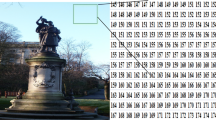Abstract
Nowadays the number of cameras integrated in mobile phones is growing very fast, making it essential to design new specific forensic analysis techniques aimed towards the pictures created with these devices. Most of these phones automatically add relevant Exif metadata in the process of image acquisition. This metadata, even if it is vulnerable to tampering, can be very helpful for a variety of forensic analysis techniques. That is why the existence of efficient, robust and specialized tools is a necessity. These should allow metadata to be extracted in a consistent, fast and sound way. Besides, metadata extraction must never manipulate the image and it needs to take into account possible departures from the Exif specification, including the insertion of the metadata in the image acquisition process by the makers, as well as any modification, whether malicious or not. This paper will show the multiple anomalies in the Exif specification we have found during our study, which can produce serious problems in classical tools for the extraction of image metadata, including crashes and wrong results, and even interoperability problems among different devices. We will also show some anomalies found in the operation of different well-known forensic tools.













Similar content being viewed by others
References
Avcibas I, Memon N, Sankur B (2003) Steganalysis using image quality metrics. IEEE Trans Image Process 12(2):221–229. doi:10.1109/TIP.2002.807363
Bayram S, Sencar HT, Memon N (2006) Improvements on source camera-model identification based on CFA interpolation. Proceedings of WG 119 international on digital forensics
Bayram S, Sencar HT, Memon N, Avcibas I (2005) Source camera identification based on CFA interpolation. ICIP 2005, pp 1–4
Boutell M, Luo J (2004) Photo classification by integrating image content and camera metadata, ICPR 04. Proceedings of the pattern recognition 17th international conference on ICPR 04, vol 4, pp 901–904. doi:10.1109/ICPR.2004.1333918
Boutell M, Luo J (2005) Beyond pixels: exploiting camera metadata for photo classification. Pattern Recog 38(6):935–946. doi:10.1016/j.patcog.2004.11.013
Chamlawi R, Khan A (2010) Digital image authentication and recovery: employing integer transform based information embedding and extraction. Inf Sci 180(24):4909–4928. doi:10.1016/j.ins.2010.08.039
Chang C (2002) A steganographic method based upon JPEG and quantization table modification. Inf Sci 141(1–2):123–138. doi:10.1016/S0020-0255(01)00194-3
Choi KS (2006) Source camera identification using footprints from lens aberration. Proc SPIE 6069(852), 60,690J–60,690J–8. doi:10.1117/12.649775
Committee S (2010) Exchangeable image file for digital still cameras: Exif version 2.3. http://www.cipa.jp/english/hyoujunka/kikaku/pdf/DC-008-2010_E.pdf
Exsoftware: photoinfoex (2007) . http://www.photoinfoex.com/
Geradts ZJ, Bijhold J, Kieft M, Kurosawa K, Kuroki K, Saitoh N (2001) Methods for identification of images acquired with digital cameras. Proc SPIE 4232:505–512. doi:10.1117/12.417569
Gloe T, Kirchner M, Winkler A, Böhme R (2007) Can we trust digital image forensics? In: Proceedings of the 15th international conference on multimedia, ACM Press, pp 7–86. doi:10.1145/1291233.1291252
Hamilton E (2004) JPEG File interchange format. Interchange 81:467–490. http://www.dspace.cam.ac.uk/handle/1810/54
Harvey P (2005) ExifTool. http://www.sno.phy.queensu.ca/%7Ephil/exiftool/
Luka J, Fridrich J, Goljan M (2006) Digital camera identification from sensor pattern noise. IEEE Trans Inf Forensic Secur 1(2):205–214. doi:10.1109/TIFS.2006.873602
Lyons M (2001) EXIF Information reader. http://www.tawbaware.com/exifread.htm
Raskin A (2007) Exif viewer 1.81. https://addons.mozilla.org/es-es/firefox/addon/exif-viewer/
Romero NL, Chornet VVGCG, Cobos JS, Carot AASCS, Centellas FC, Mendez MC (2008) Recovery of descriptive information in images from digital libraries by means of EXIF metadata. Libr Hi Tech 26(2):302–315. doi:10.1108/07378830810880388
Tesic J (2005) Metadata Practices for consumer photos. IEEE Multimedia 12(3):86–92
Thing VLL, Ng KY, Chang EC (2010) Live memory forensics of mobile phones. Digital Investigation 7(1):S74–S82. doi:10.1016/j.diin.2010.05.010
Tsai HH (2007) Color image watermark extraction based on support vector machines. Inf Sci 177(2):550–569. doi:10.1016/j.ins.2006.05.002
Van Lanh T, Chong KS, Emmanuel S, Kankanhalli MS (2007) A Survey on digital camera image forensic methods. IEEE Int Conf Multimed Expo 2007:16–19. doi:10.1109/ICME.2007.4284575
Wandel M (2010) Exif Jpeg header manipulation tool. www.sentex.net/mwandel/jhead/
Author information
Authors and Affiliations
Corresponding author
Rights and permissions
About this article
Cite this article
Sandoval Orozco, A.L., Arenas González, D.M., García Villalba, L.J. et al. Analysis of errors in exif metadata on mobile devices. Multimed Tools Appl 74, 4735–4763 (2015). https://doi.org/10.1007/s11042-013-1837-6
Published:
Issue Date:
DOI: https://doi.org/10.1007/s11042-013-1837-6




